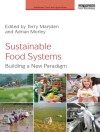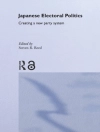Electronic waste includes such items as TVs, computers, LCD and plasma displays, and mobile phones, as well as a wide range of household, medical and industrial equipment which are simply discarded as new technologies become available. Huge and growing quantities of waste are discarded every year and this waste contains toxic and carcinogenic compounds which can pose a risk to the environment. However, if handled correctly, electronic waste presents a valuable source of secondary raw materials. This book brings together a group of leading experts in the management of electrical and electronic waste to provide an up-to-date review of the scale of the waste problem, the impact of recent legislation such as the Waste Electrical and Electronic Equipment Directive (WEEE) and the ‘restriction of the use of certain hazardous substances in electrical and electronic equipment’ directive (Ro HS), and of current and future methods for treatment, recycling and disposal of this waste. The book discusses these latest directives, examines current worldwide legislation and considers the opportunities and threats posed by this form of waste. While the emphasis is on European practice, comparisons with other countries such as the USA, Japan and China are made. The book deals with the full range of waste management issues, including recycling and recovery of materials, design considerations for waste minimisation, and contains a wide variety of illustrative case studies eg: LCD displays. With detailed and comprehensive coverage of the subject matter it also contains an extensive bibliography with each chapter. Key chapters cover areas such as: -electronic waste -materials -EU directives -landfill and incineration -recycling and recovery -‘cradle to grave’ design considerations -engineering thermoplastics It is essential reading for all involved with electrical and electronic waste management through its comprehensive review of recent EU legislation and the subsequent impact on manufacturers and users of electronic equipment.
Inhoudsopgave
Introduction and Overview;
Chapter 1: Materials Used in Manufacturing Electrical and Electronic Products;
Chapter 2: Dumping, Burning and Landfill;
Chapter 3: Recycling and Recovery;
Chapter 4: Integrated Approach to e-Waste Recycling;
Chapter 5: European Recycling Platform (ERP): a Pan-European Solution to WEEE Compliance;
Chapter 6: Liquid Crystal Displays: from Devices to Recycling;
Chapter 7: The Role of Collective versus Individual Producer Responsibility in e-Waste Management: Key Learnings from Around the World;
Chapter 8: New Developments in the Rapid Qualification of Engineering Thermoplastics
Over de auteur
Roy Harrison OBE is Queen Elizabeth II Birmingham Centenary Professor of Environmental Health at the University of Birmingham. In 2004 he was appointed OBE for services to environmental science. Professor Harrison’s research interests lie in the field of environment and human health. His main specialism is in air pollution, from emissions through atmospheric chemical and physical transformations to exposure and effects on human health. Much of this work is designed to inform the development of policy.












